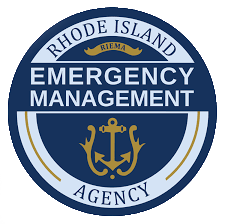Winter Weather/Extreme Cold
During winters in Rhode Island, we can expect snow or blizzards, ice, or a period of extremely cold temperatures. Snowstorms can bring an inch or two of snow or more than a foot of snow. When snow is falling at a fast rate, there are winds of 35 miles per hour or more, and visibility is near zero, it is a blizzard. Many times, there is no precipitation, but outdoor temperatures are colder than average for several days in a row.
Winter storms are often called deceptive killers because most deaths that occur are indirectly related to the actual storm. The most common causes of deaths during winter weather are motor vehicle accidents, heart attacks (caused by over exertion while shoveling snow or ice), or asphyxiation from heating sources that are not properly ventilated or are not approved sources of heat. House fires occur more frequently during the winter because people do not follow safety directions when using alternate heat sources or because people leave fires or space heaters unattended.
Be prepared for the cold, as well as the winter weather. Download our Winter Weather Preparedness Guide to keep your family prepared for anything that winter has to offer.
Additional Resources
Check Current Watches, Warning, or Advisories
Report a Power Outage
Up-to-Date List of Closings, Delays, and Parking Bans
View Current Travel Advisories & Report a Traffic Incident
